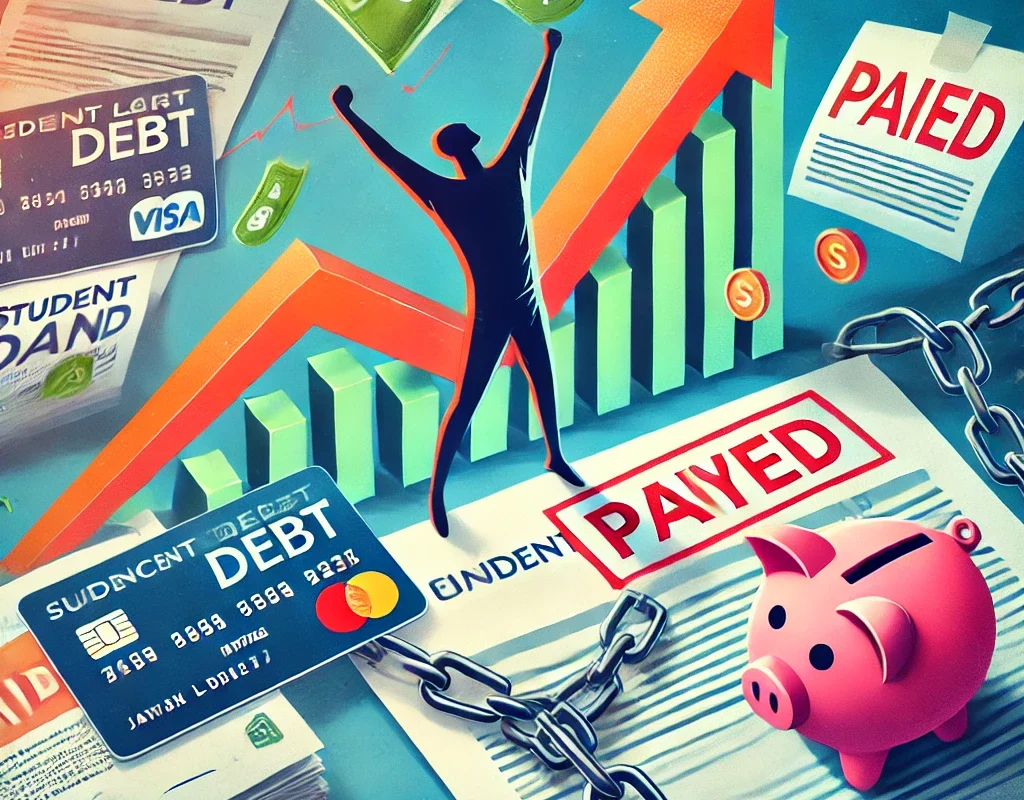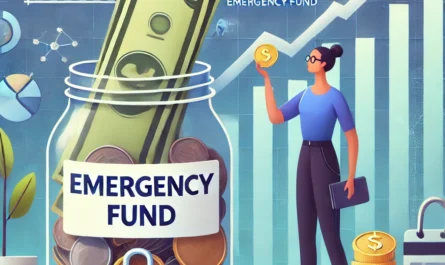Debt has become a familiar burden for many people across the globe. With credit cards, student loans, mortgages, and other financial obligations, it’s easy to feel trapped in a cycle of debt that seems impossible to escape. However, the road to financial independence often begins with understanding how to pay off debt quickly. By eliminating debt, individuals unlock the freedom to save, invest, and enjoy their hard-earned money without the weight of financial obligations holding them back.
Achieving financial independence may seem daunting, especially when faced with a mountain of debt, but with the right strategies, focus, and discipline, anyone can attain it. This guide aims to provide a comprehensive plan on how to pay off debt quickly while moving closer to long-term financial freedom.
What is Financial Independence?
Financial independence is the point where an individual’s passive income or investments cover their living expenses, allowing them to live without relying on traditional employment. While some people see financial independence as an end goal, for others, it represents the ability to make life choices free from financial constraints. Whether it’s retiring early, pursuing passions, or traveling the world, financial independence offers the freedom to do so without debt weighing you down.
Definition of Financial Independence: Financial independence means having enough financial resources to cover all your expenses without needing to work actively for money. It’s a status where your investments, savings, or passive income sources (such as dividends, rental income, or other revenue streams) can sustain your lifestyle indefinitely.
Why Achieving It Matters: When debt is no longer a part of the equation, life becomes more flexible. You gain control over your time and can pursue opportunities that align with your goals and passions instead of simply working to pay off bills. Financial independence is not just about wealth—it’s about choices, security, and mental well-being.
Benefits of Being Debt-Free: A debt-free lifestyle opens doors to more opportunities. When your income isn’t tied up in debt repayment, you can focus on saving for future goals, investing wisely, and living stress-free. Additionally, achieving financial independence early offers the peace of mind that you can weather economic downturns or life changes without scrambling to meet obligations.
Common Types of Debt Holding People Back
Before tackling debt, it’s essential to understand the most common types that weigh individuals down. By identifying which debts are causing the most harm, you can target your repayment efforts effectively.
Credit Card Debt: With high-interest rates, credit card debt is one of the most expensive forms of borrowing. It can quickly spiral out of control due to compounding interest, making it one of the first types of debt to eliminate.
Student Loans: These can take years to repay and often come with lower interest rates. However, the sheer amount of student loan debt can create a significant burden, especially for recent graduates trying to establish themselves financially.
Mortgages: While owning a home is often seen as a long-term investment, mortgage payments can tie up a large portion of monthly income. Refinancing or making extra payments can help reduce this burden faster.
Car Loans: Auto loans can create a cycle of debt, especially if individuals trade in their vehicles every few years. Paying off a car loan early frees up cash flow for other financial goals.
Understanding the Debt Snowball Method
When it comes to paying off debt quickly, the Debt Snowball Method is one of the most popular and effective strategies. This method focuses on paying off the smallest debts first, regardless of interest rates, and then rolling those payments into the next-largest debt. Over time, this creates a “snowball effect,” allowing momentum to build as each debt is eliminated.
What Is the Debt Snowball Method? This strategy involves listing all your debts from smallest to largest and aggressively paying off the smallest debt first while making minimum payments on the rest. Once the smallest debt is cleared, the money that was used to pay it off is applied to the next smallest debt, and so on.
How to Use the Snowball Method Effectively: To succeed with the snowball method, focus on small victories. Eliminating even the smallest debt provides a psychological boost and keeps you motivated. It’s important to stay committed to the process and resist the temptation to take on new debt during repayment.
The Debt Avalanche Method Explained
For individuals focused on minimizing interest payments over time, the Debt Avalanche Method offers an alternative approach. This method targets the debt with the highest interest rate first, helping to save money in the long run.
Difference Between Snowball and Avalanche: The key difference is that the Debt Avalanche Method prioritizes debts with the highest interest rates, whereas the snowball method focuses on eliminating the smallest balances first. Both methods have their merits, but the avalanche is best for those more concerned with reducing interest.
Pros and Cons of the Debt Avalanche Method: While the debt avalanche saves more money on interest over time, it may be harder to stay motivated as progress can feel slower compared to the snowball method. However, if you’re determined to pay as little interest as possible, this could be the best strategy for you.
Creating a Realistic Budget for Debt Payoff
A well-planned budget is the backbone of any debt repayment strategy. Without a clear understanding of your income and expenses, it’s nearly impossible to accelerate your debt payoff. Start by tracking every dollar you earn and spend, identifying areas where you can cut back and funnel more money toward debt.
Assessing Your Current Financial Situation: Begin by calculating your total debt, including the interest rates on each balance. Then, evaluate your monthly income and expenses to determine how much you can realistically allocate toward debt repayment each month.
Prioritizing Expenses: To free up more money for debt payoff, categorize your expenses as either “essential” or “non-essential.” Essentials include housing, utilities, and groceries, while non-essentials are things like dining out, entertainment, or subscription services. By cutting non-essential expenses, you can significantly increase the amount of money available for debt repayment.
You Can Also Read : How to Transition from Full-Time Work to Retirement Smoothly
Emergency Funds: Why You Still Need Them
While paying off debt quickly is a priority, it’s important not to neglect the importance of an emergency fund. Life is unpredictable, and without a financial cushion, an unexpected expense could derail your progress.
Importance of an Emergency Fund Even While Paying Off Debt: A small emergency fund (typically $1,000 to $2,000) ensures that unforeseen events, such as medical bills or car repairs, don’t force you to take on new debt. This fund acts as a financial buffer, allowing you to stay on track with your debt repayment plan.
How to Build a Small Safety Net: Start by setting aside a portion of your income each month until you’ve accumulated a small emergency fund. Once this safety net is in place, you can confidently direct the rest of your resources toward paying off debt.



